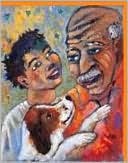The Developing Person Through the Life Span
Search in google:
Kathleen Stassen Berger's best-selling books on all stages of human development present theory, research, practical examples, and controversial issues in a way that inspires students to think about development--and about the individual's role in the community and the world. The Fifth edition of The Developing Person Through the Life Span again weaves theory, research and applications into a masterful narrative that captivates and involves students. All the Berger hallmarks are here, along with new content, features, media, and supplements that make this edition the most effective and far-reaching to date.
Part IThe Beginnings1Chapter 1Introduction3Studying the Life Span: Five Characteristics3A Case to Study: "This Sense of Liberation"8In Person: My Nephew David16Developmental Study as a Science18Studying Changes over Time23Ethics and Science29Chapter 2Theories of Development33What Theories Do33Grand Theories34Thinking Like a Scientist: What Is a Mother For?40Emergent Theories45In Person: My Beautiful, Hairless Babies51What Theories Can Contribute52Chapter 3Heredity and Environment59The Genetic Code59Changing Policy: Too Many Boys? Too Many Girls?63Thinking Like a Scientist: The Human Genome Project69From Genotype to Phenotype70Chromosomal and Genetic Abnormalities75A Case to Study: What Do People Live to Do?81Changing Policy: Decisions and Values86Chapter 4Prenatal Development and Birth91From Zygote to Newborn91Risk Reduction97Changing Policy: AIDS and Alcohol as Teratogens102The Birth Process107Part IIThe First Two Years: Infants and Toddlers119Chapter 5The First Two Years: Biosocial Development121Body Changes121A Case to Study: Toni's Well-Child Visit122Early Brain Development125Thinking Like a Scientist: Plasticity and Young Orphans129The Senses and Motor Skills130In Person: the Normal Berger Daughters135Public Health Measures136Chapter 6The First Two Years: Cognitive Development147Sensorimotor Intelligence147Thinking Like a Scientist: Object Permanence Revisited150Information Processing154Language: What Develops in Two Years?158Chapter 7The First Two Years: Psychosocial Development171A Case to Study: Parents on Autopilot172Theories About Early Psychosocial Development172Emotional Development178The Development of Social Bonds180Conclusions in Theory and Practice189Part IIIThe Play Years195Chapter 8The Play Years: Biosocial Development197Body and Brain197Motor Skills and Avoidable Injuries203Changing Policy: Fences All Around the Pool207Child Maltreatment208A Case to Study: The Neglect of Neglect: A 2-Year-Old Boy211Chapter 9The Play Years: Cognitive Development217How Children Think: Piaget and Vygotsky217Language225In Person: Fast Mapping: Mommy the Brat227Early-Childhood Education230Chapter 10The Play Years: Psychosocial Development237Emotional Development237Parenting Patterns246Boy or Girl: So What?253In Person: Berger and Freud255Part IVThe School Years263Chapter 11The School Years: Biosocial Development265In Person: Two Children of Mexican Heritage in California266A Healthy Time267Brain Development271Children with Special Needs276A Case to Study: Billy: Dynamo or Dynamite?276Chapter 12The School Years: Cognitive Development289Building on Piaget and Vygotsky289Information Processing296Teaching and Learning301Thinking Like a Scientist: How Does Class Size Affect Learning?302Chapter 13The School Years: Psychosocial Development313The Child's Emotions and Concerns313The Peer Group317Thinking Like a Scientist: Intervention to Stop Bullying: Impossible?322Families and Children323Coping with Problems330Part VAdolescence339Chapter 14Adolescence: Biosocial Development341Puberty Begins341Hazards to Health350Changing Policy: Postponing Teenage Drug Experimentation358Chapter 15Adolescence: Cognitive Development363Intellectual Advances363Thinking Like a Scientist: Piaget's Balance Experiment364Adolescent Decision Making372Chapter 16Adolescence: Psychosocial Development385The Self and Identity385Sadness and Anger391Family and Friends397In Person: Talking to My Children About Marriage and Parenthood400Conclusion406Part VIEarly Adulthood411Chapter 17Early Adulthood: Biosocial Development413Growth, Strength, and Health413Emotional Problems in Early Adulthood423A Case to Study: Julia Again: "Too Thin, As If That's Possible"425Chapter 18Early Adulthood: Cognitive Development435Postformal Thought436Thinking Like a Scientist: Reducing Stereotype Threat442Adult Moral Reasoning445In Person: Faith and Tolerance449Cognitive Growth and Higher Education449In Person: A Dialectical View of Cheating454Chapter 19Early Adulthood: Psychosocial Development459Theories of Adulthood459A Case to Study: Linda: "Her Major Issues Were Relationships and Career"461Intimacy464In Person: Romance and Reality: Changing Expectations474Generativity476A Case to Study: Linda: "A Much Sturdier Self"485Part VIIMiddle Adulthood489Chapter 20Middle Adulthood: Biosocial Development491Primary and Secondary Aging491Measuring Health498Health Habits Through the Years502Thinking Like a Scientist: World Health and the Tragedy of the Commons508Ethnic Variations in Health509Chapter 21Middle Adulthood: Cognitive Development519What Is Intelligence?519Thinking Like a Scientist: Case by Case527Selective Gains and Losses530In Person: An Experienced Parent531A Case to Study: "Men Come and Go"539Chapter 22Middle Adulthood: Psychosocial Development543Personality Throughout Adulthood543Family Relationships in Midlife549Work in Middle Adulthood564Changing Policy: Income and Age566Part VIIILate Adulthood573Chapter 23Late Adulthood: Biosocial Development575Prejudice and Predictions576Primary Aging in Late Adulthood583Theories of Aging593The Centenarians599Chapter 24Late Adulthood: Cognitive Development605Changes in Information Processing605Reasons for Age-Related Changes611Thinking Like a Scientist: Neuroscience and Brain Activity611Dementia618New Cognitive Development in Later Life625Chapter 25Late Adulthood: Psychosocial Development633Theories of Late Adulthood634A Case to Study: Mrs. Edwards, Doing Just Fine642Keeping Active644The Social Convoy649The Frail Elderly656Changing Policy: Between Fragile and Frail: Protective Buffers660Epilogue: Death and Dying1Deciding How to Die1Medical Professionals2Legal Preparations4Preparing for Death7Avoiding Despair7A Case to Study: "Ask My Son and My Husband"8Cultural Variations9Coping with Bereavement12Forms of Sorrow12Contemporary Challenges14Responses to Bereavement15Conclusion16Appendix ASupplemental Charts, Graphs, and Tables1Appendix BMore About Research Methods1Appendix CSuggestions for Research Assignments1Glossary1References1Name Index1Subject Index1








